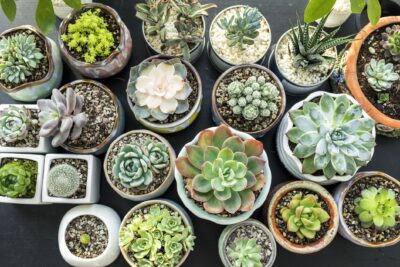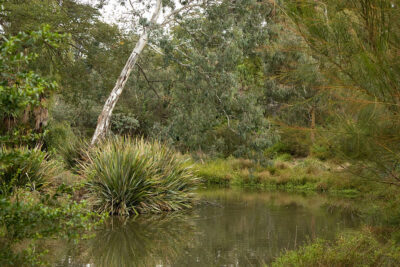
Discover the Fascinating Succulent Resembling an Artichoke

Succulents are a diverse group of plants known for their unique and interesting forms. From the popular aloe vera to the quirky string of pearls, succulents have captured the hearts of plant enthusiasts around the world. One particularly fascinating succulent that has gained attention is the plant that resembles an artichoke. With its distinct shape and texture, this succulent is a standout addition to any garden or indoor plant collection.
We will explore the intriguing succulent that looks like an artichoke and delve into its origins and characteristics. We will discuss its scientific name, common varieties, and the ideal growing conditions for this plant. Additionally, we will provide tips on how to care for this succulent, including watering, sunlight requirements, and propagation methods. Whether you're a seasoned plant lover or just starting out in your green thumb journey, this article will provide you with all the information you need to appreciate and cultivate this captivating succulent.
- Learn about the unique characteristics of the artichoke succulent
- Find out how to care for and grow artichoke succulents
- Discover the best ways to propagate artichoke succulents
- Explore different varieties of artichoke succulents
- Find inspiration for using artichoke succulents in your home decor
- Learn how to troubleshoot common issues with artichoke succulents
- Connect with a community of artichoke succulent enthusiasts for tips and advice
- Stay up to date with the latest trends and developments in artichoke succulent cultivation
- Get creative with artichoke succulent crafts and DIY projects
- Find out where to buy artichoke succulents and other related supplies
- Frequently Asked Questions
Learn about the unique characteristics of the artichoke succulent
The artichoke succulent, also known as Euphorbia obesa, is a mesmerizing plant that resembles the shape and texture of a real artichoke. This intriguing succulent is native to the arid regions of South Africa and has gained popularity among plant enthusiasts worldwide.
One of the most fascinating characteristics of the artichoke succulent is its distinct appearance. The plant features a spherical body with distinct ridges and bumps, just like a miniature artichoke. Its green coloration adds to its artichoke-like charm, making it a unique addition to any succulent collection.
Adaptable and Drought-Tolerant
The artichoke succulent is highly adaptable to various environments and is known for its remarkable drought tolerance. This succulent has evolved to survive in harsh desert conditions, making it an ideal choice for those who struggle to maintain other delicate plants.
Due to its ability to store water in its swollen stem, the artichoke succulent can withstand extended periods of drought without compromising its overall health. This resilience makes it a low-maintenance plant, perfect for busy individuals or those new to succulent care.
Easy Propagation
Another appealing aspect of the artichoke succulent is its ease of propagation. This succulent can be propagated through both seeds and stem cuttings, making it a versatile plant for those looking to expand their collection or share it with fellow plant enthusiasts.
 Discover Beautiful Flowering Succulents: Learn How to Identify Them
Discover Beautiful Flowering Succulents: Learn How to Identify ThemTo propagate the artichoke succulent from stem cuttings, simply take a healthy cutting and allow it to callus for a few days. Once calloused, place the cutting in well-draining soil and provide it with bright, indirect light. With proper care and attention, roots will form, and a new plant will emerge.
A Unique Conversation Starter
With its distinctive appearance, the artichoke succulent serves as a captivating conversation starter. Whether displayed as a centerpiece on a dining table or showcased in a stylish succulent arrangement, this plant is sure to draw attention and spark curiosity among guests.
The artichoke succulent's unique shape and texture provide an aesthetic appeal that can complement a variety of home decor styles. Its compact size also makes it an excellent choice for small spaces, such as office desks or windowsills.
The artichoke succulent is a remarkable plant that not only resembles an artichoke but also possesses several unique characteristics. Its adaptability, drought tolerance, and ease of propagation make it an ideal choice for both experienced gardeners and beginners. Whether you're a succulent enthusiast or simply looking to add a touch of charm to your space, the artichoke succulent is a must-have plant that is sure to captivate and inspire.
Find out how to care for and grow artichoke succulents
If you are a fan of unique and eye-catching succulents, then you will definitely want to add the artichoke succulent to your collection. This fascinating plant, also known as the artichoke agave or Agave parryi, bears a striking resemblance to the edible artichoke vegetable, hence its name.
The artichoke succulent is native to the arid regions of Mexico and the southwestern United States. Its distinctive rosette shape and spiky leaves make it a standout in any garden or indoor plant display.
 Is a Cactus a Type of Succulent Flower? Understanding the Relationship
Is a Cactus a Type of Succulent Flower? Understanding the RelationshipCaring for your artichoke succulent
Artichoke succulents are relatively easy to care for, making them a great choice for both novice and experienced plant enthusiasts. Here are some important tips to keep in mind:
- Light: Artichoke succulents thrive in bright, indirect sunlight. They can tolerate some direct sunlight, but too much exposure can scorch their leaves. Place them near a sunny window or in a well-lit spot in your garden.
- Water: These succulents are drought-tolerant and prefer dry conditions. Allow the soil to dry out completely between waterings. Overwatering can cause root rot and other issues, so it's best to err on the side of underwatering.
- Soil: Well-draining soil is crucial for the health of your artichoke succulent. Use a cactus or succulent potting mix that provides excellent drainage. You can also mix in some perlite or sand to improve drainage.
- Temperature: Artichoke succulents are hardy plants that can tolerate a wide range of temperatures. They are most comfortable in temperatures between 65-80°F (18-27°C), but they can handle temperatures as low as 20°F (-7°C).
- Fertilizer: These succulents are not heavy feeders, but you can give them a small amount of balanced fertilizer during the growing season. Be sure to dilute the fertilizer to half the recommended strength to avoid overfeeding.
Growing artichoke succulents
Artichoke succulents can be propagated through offsets or by collecting and sowing their seeds. Here's how you can grow your own artichoke succulents:
- Offsets: Look for small offsets or "pups" that grow around the base of the main plant. Gently separate these offsets from the parent plant and plant them in a well-draining potting mix. Allow them to establish roots before watering.
- Seeds: If you want to grow artichoke succulents from seeds, collect the seeds from mature plants. Sow the seeds in a well-draining potting mix and keep them warm and moist. Germination can take several weeks, so be patient and provide the right conditions.
With proper care and attention, your artichoke succulent will continue to thrive and provide you with its unique beauty for years to come. Whether you're a succulent enthusiast or simply looking for a conversation starter in your garden, the artichoke succulent is sure to impress.
Discover the best ways to propagate artichoke succulents
If you are a succulent enthusiast, you must have come across the fascinating succulent that resembles an artichoke. This unique plant, known as the artichoke succulent, is a stunning addition to any succulent collection. Not only does it have a striking appearance, but it is also relatively easy to propagate, making it a favorite among succulent lovers.
When it comes to propagating artichoke succulents, there are several methods you can try. Here are the best ways to propagate this captivating succulent:
1. Leaf cuttings
Leaf cuttings are one of the most popular methods of propagating artichoke succulents. To propagate using this method, simply select a healthy leaf from the parent plant. Gently twist the leaf to detach it from the stem, ensuring that you include the base of the leaf. Allow the leaf cutting to dry for a few days to form a callus before planting it in well-draining soil. Keep the soil slightly moist and place the cutting in a warm, bright location. With time, new roots will develop, and a new plant will emerge.
 Exploring Spotted Succulents: A Guide to Fascinating Leaf Patterns
Exploring Spotted Succulents: A Guide to Fascinating Leaf Patterns2. Stem cuttings
Stem cuttings are another effective way to propagate artichoke succulents. Similar to leaf cuttings, select a healthy stem and cut it just below a node. Leave the cutting to dry for a few days until it forms a callus. Once the callus has formed, plant the cutting in well-draining soil, ensuring that the nodes are buried in the soil. Water the cutting sparingly and place it in a spot with bright, indirect sunlight. Over time, the cutting will develop roots and grow into a new plant.
3. Division
Division is a method best suited for mature artichoke succulents that have multiple rosettes. To propagate through division, carefully remove the parent plant from its pot and gently separate the rosettes, ensuring that each division has its own set of roots. Plant the divisions in separate containers, making sure to use well-draining soil. Water the newly divided plants lightly and place them in a location with bright, indirect light. With proper care, each division will establish itself as an individual plant.
4. Offsets
Artichoke succulents often produce offsets, which are small plants that grow from the base of the parent plant. To propagate using offsets, gently separate the offsets from the parent plant, ensuring that they have their own set of roots. Plant the offsets in well-draining soil and keep the soil slightly moist. Place the newly potted offsets in a warm, bright location and watch as they grow into beautiful artichoke succulents.
Whichever propagation method you choose, it is important to provide the newly propagated artichoke succulents with proper care. Ensure they receive adequate sunlight, water them sparingly, and use well-draining soil to avoid root rot. With patience and care, you will have a thriving collection of artichoke succulents that will continue to fascinate and delight.
Explore different varieties of artichoke succulents
Artichoke succulents, also known as Echeveria, are a mesmerizing type of succulent that resemble artichoke flowers. These unique plants are members of the Crassulaceae family and come in various shapes, sizes, and colors.
One of the most popular varieties of artichoke succulents is the Echeveria elegans. This stunning succulent features rosettes of pale blue-green leaves that have a powdery coating, giving them a uniquely soft appearance. With its compact size and attractive coloration, it is a favorite choice for both indoor and outdoor gardens.
 Identifying Tube-Like Succulents: A Shape Guide
Identifying Tube-Like Succulents: A Shape GuideAnother captivating variety is the Echeveria agavoides. It is characterized by its striking triangular-shaped leaves with vibrant red edges. This succulent adds a pop of color to any arrangement or garden and is often sought after by collectors.
If you prefer a larger succulent with a more dramatic presence, the Echeveria gibbiflora is an excellent choice. Its rosettes can grow up to 12 inches wide and have a distinctive red hue. These succulents are known for their ability to thrive in various weather conditions, making them a popular choice for outdoor landscaping projects.
For those who appreciate variegated foliage, the Echeveria 'Perle von Nürnberg' is a must-have. This variety features rosettes of pastel-colored leaves with a powdery coating, ranging from lavender to pink. It adds a touch of elegance and uniqueness to any garden or succulent arrangement.
How to care for artichoke succulents
Artichoke succulents are relatively easy to care for, making them suitable for both beginner and experienced gardeners. Here are some key care tips:
- Light: Artichoke succulents thrive in bright, indirect light. Place them near a window or in a well-lit area of your garden.
- Watering: Allow the soil to dry out completely between waterings. Overwatering can lead to root rot, so it's crucial to avoid excessive moisture.
- Soil: Use well-draining soil specifically formulated for succulents. This allows excess water to flow through the soil, preventing waterlogged roots.
- Temperature: Artichoke succulents prefer temperatures between 60-80°F (15-27°C). Protect them from extreme cold or heat.
- Propagation: These succulents can be propagated through leaf cuttings or offsets. Simply remove a healthy leaf or offset, let it dry for a few days, and plant it in well-draining soil.
With proper care, artichoke succulents can thrive and continue to impress with their unique beauty. Whether you're a succulent enthusiast or a novice gardener, adding an artichoke succulent to your collection is sure to bring joy and fascination.
Find inspiration for using artichoke succulents in your home decor
Are you looking for a unique and eye-catching addition to your home decor? Look no further than the artichoke succulent. With its striking resemblance to the beloved artichoke vegetable, this succulent is sure to be a conversation starter in any room.
 Unraveling the Mystery Behind the Name "Succulents"
Unraveling the Mystery Behind the Name "Succulents"Not only are artichoke succulents visually appealing, but they are also incredibly easy to care for. These low-maintenance plants require minimal watering and can thrive in a variety of light conditions, making them perfect for both experienced and novice plant enthusiasts.
But how can you incorporate artichoke succulents into your home decor? Here are a few ideas to get you started:
Create a stunning centerpiece
Place a few artichoke succulents in a decorative bowl or tray to create a unique and eye-catching centerpiece for your dining table or coffee table. The contrasting textures and colors of the succulents will add visual interest and natural beauty to any space.
Add them to your vertical garden
If you have a vertical garden or a wall-mounted planter, artichoke succulents can be a perfect addition. Their distinct shape and vibrant hues will create a stunning vertical display that is sure to impress.
Use them as a focal point
Instead of traditional flowers, use artichoke succulents as the focal point of your floral arrangements. Their unique appearance will add a touch of whimsy and intrigue to any bouquet or vase.
Pair them with other succulents
Combine artichoke succulents with other varieties of succulents to create a visually pleasing and diverse display. Mix and match different shapes, sizes, and textures to add depth and dimension to your succulent collection.
Whether you're a seasoned plant enthusiast or just starting your indoor gardening journey, artichoke succulents are a fantastic choice for adding a touch of natural beauty to your home decor. With their unique appearance and easy care requirements, these succulents are sure to leave a lasting impression.
 Spotlight: Revealing Distinctive Spotted Leaves of Succulents
Spotlight: Revealing Distinctive Spotted Leaves of SucculentsLearn how to troubleshoot common issues with artichoke succulents
Artichoke succulents, also known as Echeveria Elegans, are a fascinating addition to any succulent collection. With their unique appearance resembling a miniature artichoke, these plants are not only aesthetically pleasing but also relatively easy to care for. However, like any other plant, artichoke succulents can encounter some common issues that may affect their health and appearance.
Overwatering
One of the most common problems encountered with artichoke succulents is overwatering. These plants have thick, fleshy leaves that store water, allowing them to survive in arid conditions. However, excessive watering can lead to root rot and other fungal diseases. To prevent overwatering, it is essential to let the soil dry out completely between waterings. Ensure that the pot has proper drainage to allow excess water to escape.
Sunburn
Artichoke succulents thrive in bright, indirect sunlight. However, prolonged exposure to intense sunlight can cause sunburn, which manifests as brown or white patches on the leaves. To protect your artichoke succulent from sunburn, it is recommended to provide some shade during the hottest part of the day or move them to a spot with filtered sunlight.
Pest Infestation
Despite their resilience, artichoke succulents can still fall victim to common pests such as aphids, mealybugs, and spider mites. These pests can cause damage to the leaves and weaken the overall health of the plant. Regularly inspect your succulent for any signs of pest infestation, such as sticky residue, webbing, or tiny insects. If detected, treat the infestation promptly with neem oil or a natural insecticidal soap.
Soil Issues
The type of soil used for artichoke succulents is crucial for their overall well-being. These plants prefer well-draining soil that allows excess moisture to escape. Using a cactus or succulent mix enriched with perlite or sand can help improve drainage. Additionally, avoid using soil that retains too much moisture, such as heavy potting soil, as it can lead to root rot and other issues.
Lack of Air Circulation
Artichoke succulents benefit from good air circulation, which helps prevent the growth of mold and mildew. Placing them in an area with adequate ventilation or using a small fan can enhance air movement around the plants. Avoid overcrowding your succulents and ensure they have enough space to thrive.
 Are Black Succulents Real Plants or Simply Dyed?
Are Black Succulents Real Plants or Simply Dyed?By addressing these common issues promptly, you can ensure that your artichoke succulents remain healthy and vibrant. With the right care and attention, these unique succulents will continue to captivate and beautify your indoor or outdoor spaces.
Connect with a community of artichoke succulent enthusiasts for tips and advice
If you are a succulent lover looking to connect with like-minded individuals who share your passion for unique and fascinating plants, you have come to the right place. Our community of artichoke succulent enthusiasts is the perfect platform for you to learn, share, and connect with others who appreciate the beauty of this particular succulent.
Artichoke succulents, also known as Cynara cardunculus, are a visually striking and captivating addition to any plant collection. With their distinctive artichoke-like appearance, these succulents are sure to become the centerpiece of any garden or indoor space. Their thick, fleshy leaves and unique growth patterns make them a favorite amongst succulent enthusiasts.
Why join the artichoke succulent community?
By joining our artichoke succulent community, you gain access to a wealth of knowledge and expertise from experienced growers and enthusiasts. Whether you are a beginner looking to learn the basics of caring for artichoke succulents or an experienced grower seeking advanced tips and tricks, our community members are here to support you every step of the way.
- Exchange tips and advice: Get valuable insights on how to care for your artichoke succulents, including watering schedules, sunlight requirements, and soil preferences.
- Share your success stories: Show off your thriving artichoke succulents and inspire others with your gardening achievements.
- Discover new varieties: Explore the vast world of artichoke succulents and learn about different species, hybrids, and cultivars.
- Connect with fellow enthusiasts: Engage in discussions, ask questions, and build connections with other artichoke succulent lovers from all around the globe.
Our community is a friendly and inclusive space where everyone is encouraged to share their experiences, ask questions, and celebrate the beauty of artichoke succulents. No matter your level of expertise or the size of your collection, you'll find a warm welcome and a wealth of knowledge within our community.
Join our artichoke succulent community today and embark on a journey of growth, beauty, and connection. Together, let's explore the fascinating world of artichoke succulents!
Stay up to date with the latest trends and developments in artichoke succulent cultivation
 Discover the Fascinating Succulents That Resemble Green Beans
Discover the Fascinating Succulents That Resemble Green BeansIf you are a succulent enthusiast or a plant lover looking to add a unique and eye-catching plant to your collection, then the artichoke succulent is a must-have. This fascinating succulent, also known as Pachycereus schottii var. monstrosus, is native to Mexico and has gained popularity in recent years due to its striking resemblance to the artichoke vegetable.
With its distinctive shape and texture, the artichoke succulent is a conversation starter that can instantly elevate the aesthetics of any indoor or outdoor space. Its thick, fleshy stems grow in a spiral pattern, resembling the tightly packed leaves of an artichoke. The stems are ribbed and covered in spines, adding an additional layer of visual interest.
When it comes to caring for the artichoke succulent, it is relatively low-maintenance, making it an ideal choice for both experienced gardeners and beginners alike. This succulent thrives in well-draining soil and prefers bright, indirect light. It can tolerate periods of drought and requires minimal watering, making it a great option for those who tend to forget about their plants from time to time.
In terms of propagation, the artichoke succulent can be easily propagated from cuttings. Simply take a stem cutting and allow it to dry for a few days before planting it in a well-draining soil mix. With proper care, the cutting will develop roots and grow into a new plant.
Why choose the artichoke succulent?
Aside from its unique appearance, the artichoke succulent offers several benefits that make it a worthwhile addition to your plant collection. Here are a few reasons why you should consider adding this captivating succulent to your home or garden:
- Drought tolerance: The artichoke succulent is adapted to survive in arid conditions, making it an excellent choice for water-wise gardens or for those living in regions with limited rainfall.
- Low maintenance: This succulent requires minimal care and attention. Its ability to withstand periods of neglect or forgetfulness makes it a perfect plant for busy individuals or frequent travelers.
- Unique focal point: The artichoke succulent's striking appearance is sure to draw attention and become a focal point in any garden or indoor space. Its unusual shape and texture make it a standout among other succulents.
- Easy propagation: With its ease of propagation from stem cuttings, you can easily expand your artichoke succulent collection or share it with friends and family.
Whether you are a seasoned succulent enthusiast or a beginner gardener, the artichoke succulent offers a visually striking and low-maintenance option for your plant collection. Its unique appearance, coupled with its ease of care, makes it a popular choice for plant lovers around the world. Stay up to date with the latest trends and developments in artichoke succulent cultivation to ensure your plants thrive and continue to captivate viewers with their artichoke-like charm.
Get creative with artichoke succulent crafts and DIY projects
Artichoke succulents are a unique and fascinating addition to any garden or indoor plant collection. With their distinct shape and texture, these succulents resemble miniature artichokes, adding a touch of whimsy to your space. But did you know that you can also get creative with artichoke succulent crafts and DIY projects? Here are some ideas to inspire you:
 Are Pink Succulent Flowers Real? Unveiling the Truth
Are Pink Succulent Flowers Real? Unveiling the TruthCreate a stunning artichoke succulent arrangement
One way to showcase the beauty of artichoke succulents is by creating a captivating arrangement. Start by gathering a variety of succulents in different shapes and sizes, including the artichoke succulent as the focal point. Arrange them in a shallow dish or terrarium, making sure to mix and match colors and textures for an eye-catching display. Add some decorative rocks or pebbles to complete the look.
Design a hanging artichoke succulent planter
If you're looking for a unique way to display your artichoke succulents, consider creating a hanging planter. Get a decorative basket or macrame hanger and line it with a plastic liner or moss. Plant your artichoke succulent in the center, surrounded by other trailing succulents or cascading plants. Hang it near a window or on your porch to add a touch of greenery to your space.
Make artichoke succulent candles
For a creative and functional DIY project, why not make artichoke succulent candles? Start by selecting small artichoke succulents and carefully removing the leaves, leaving the center intact. Place a wick in the center and pour melted candle wax around it. Allow the wax to harden, and voila! You have a unique succulent-shaped candle. These candles make great gifts or centerpieces for special occasions.
Build a miniature artichoke succulent fairy garden
Let your imagination run wild and create a whimsical fairy garden using artichoke succulents as the centerpiece. Start with a shallow container or planter and fill it with soil. Plant your artichoke succulent in the center and add miniature fairy accessories like tiny houses, fairy figurines, and decorative rocks. You can even incorporate other small succulents and plants to create a magical and enchanting scene.
As you can see, artichoke succulents offer endless possibilities for creativity and DIY projects. Whether you choose to create an arrangement, make candles, or build a fairy garden, these unique succulents are sure to add a touch of charm and intrigue to your space. So go ahead, get creative, and let your imagination soar!
Where to Buy Artichoke Succulents
If you're looking to add a unique and intriguing succulent to your collection, the artichoke succulent is a must-have. With its uncanny resemblance to the popular edible vegetable, this succulent is sure to be a conversation starter.
When it comes to purchasing artichoke succulents, you have a few options. Here are some places where you can find these captivating plants:
 Finding Chinese Jade Succulents: A Guide for Enthusiasts
Finding Chinese Jade Succulents: A Guide for Enthusiasts- Local Nurseries: Check out your nearby nurseries or garden centers. They often carry a wide range of succulents, including the artichoke variety. Talk to the knowledgeable staff, who can provide guidance on caring for these unique plants.
- Online Plant Retailers: The internet offers a vast selection of artichoke succulents. Online plant retailers like Succulent Paradise or The Succulent Source provide a convenient way to browse through different varieties and have them delivered right to your doorstep.
- Succulent Specialty Stores: Look for specialty succulent stores in your area. These stores focus specifically on succulents and often have a variety of rare and hard-to-find species, including the artichoke succulent.
No matter where you choose to purchase your artichoke succulent, make sure to select a healthy plant with vibrant leaves and an overall robust appearance. This will set you up for success in growing and caring for your new succulent.
Alongside the artichoke succulent itself, there are a few supplies that can enhance your experience of owning and caring for this captivating plant. Here are some essential items to consider:
- Pot or Planter: Choose a pot or planter that complements the unique appearance of the artichoke succulent. Look for a container with good drainage to prevent waterlogging.
- Succulent Soil: Artichoke succulents thrive in well-draining soil. Consider purchasing a specialized succulent or cactus soil mix to ensure proper moisture regulation for your plant.
- Fertilizer: To promote healthy growth, consider using a balanced succulent fertilizer. Follow the instructions on the packaging to avoid over-fertilization, which can harm your plant.
- Spray Bottle: Artichoke succulents appreciate occasional misting to increase humidity levels. Keep a spray bottle handy to provide a refreshing mist to your plant.
- Gardening Tools: Basic gardening tools like a small trowel or pruning shears can come in handy for general maintenance and grooming of your artichoke succulent.
By having these supplies on hand, you'll be well-prepared to care for and showcase your artichoke succulent.
Frequently Asked Questions
1. What is the name of the succulent that resembles an artichoke?
The succulent that resembles an artichoke is called Echeveria 'Perle von Nürnberg'.
2. How big does this succulent grow?
Echeveria 'Perle von Nürnberg' can grow up to 6 inches in diameter.
3. How often should I water this succulent?
Watering once every 2-3 weeks is usually sufficient for Echeveria 'Perle von Nürnberg'.
4. Does this succulent require direct sunlight?
Yes, Echeveria 'Perle von Nürnberg' thrives in bright, indirect sunlight.
If you want to read more articles similar to Discover the Fascinating Succulent Resembling an Artichoke, you can visit the Identification category.






You Must Read